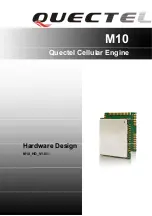
-8-
H8102 Stirling Engine Machined Kit 1
�������
��������
��������
����
�
�
��
�������
���������
������
��������
������
Figure 2.
Cooling cylinder and base assembly
showing location of 30° vent hole.
Drilling the Vent Hole
In order for the internal air to move from the heat-
ing cylinder to the cooling cylinder, you must drill
a
3
⁄
16
" (5mm) vent hole at a 30° angle through the
cooling cylinder base (
Ref 14
) and cooling cylin-
der (
Ref 15
) assembly.
Firmly seat the cooling cylinder into the top of the
cooling cylinder base as shown in
Figure 2
.
Drill a
3
⁄
16
" (5mm) hole at a 30° upward angle
through the side of the of the cylinder base and
into the bottom cavity of the cooling cylinder.
Note:
Make sure the hole starts above the center
hole in the circular indent, as shown in
Figure 2
.
Clean out any metal debris after drilling.
Positioning the Pistons
One piston needs to draw the air into its cylinder
as the other piston pushes the air out of its cylin-
der. This cooperative process is a significant part
of the Stirling engine's efficiency.
In order for the pistons to work together, assemble
the linkage so that operating cycle of the pistons
are directly opposite of one another. See
Figure
3
for an illustration of this positioning.
�������
������
�������
������
Figure 3.
Pistons positioned in opposing points
and traveling in opposite directions.
Positioning the Connecting Arms
When assembling the connecting arms (
Ref 30
)
with the axles and other linkage, be sure that both
connecting arms are even and aligned with one
another, as shown in
Figure 4
.
����������
����
�
�������
Figure 4.
Connecting arms in correct alignment
with one another.






























